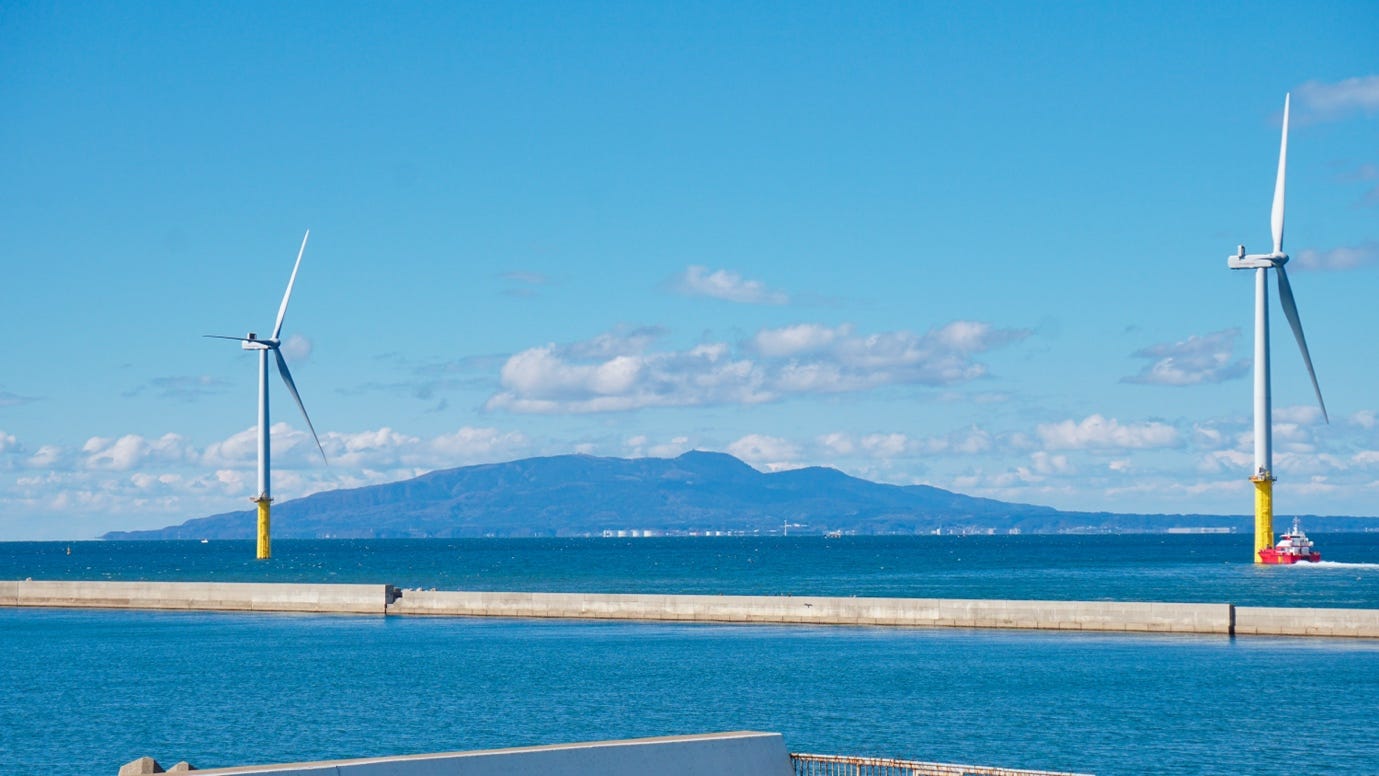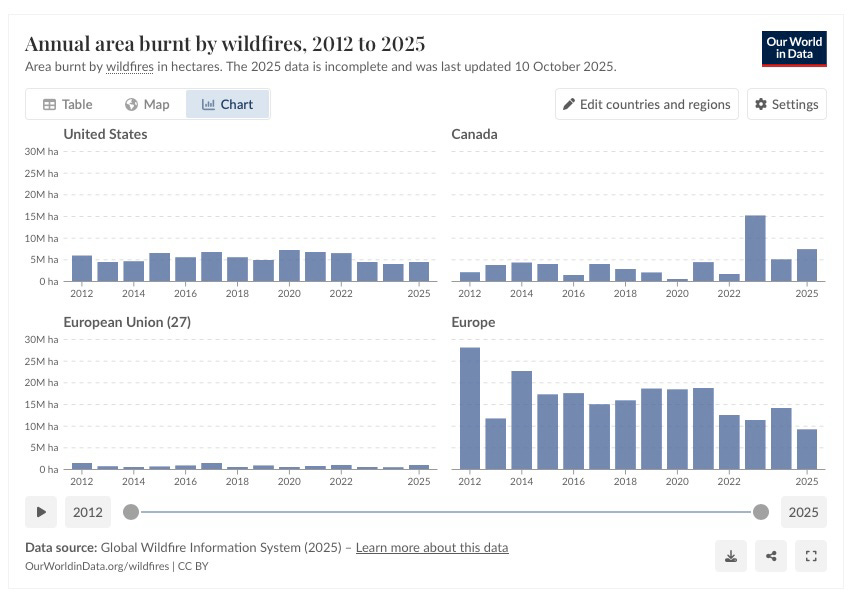News Round-Up: German Minister Opposes Chat Control, LGBTIQ+ Plan Bans Conversion Therapy, EU’s EES Rollout Begins
Every week, the editorial team of Freedom Research compiles a round-up of news that caught our eye, or what felt like under-reported aspects of news deserving more attention.
Over the past week, the following topics attracted our attention:
German Justice Minister Opposes EU Chat-Control Plan
EU’s LGBTIQ+ New Strategy: Empowering Children to Self-Determine Gender Identity
Japan’s Offshore Wind Setbacks: A Warning against Unrealistic Climate Goals
Historical Data Challenges Climate Change as Primary Driver of Wildfires
Estonia, Luxembourg, and the Czech Republic to Fully Roll Out Biometric Border Control This Weekend
German Justice Minister Opposes EU Chat-Control Plan
German Justice Minister Stefanie Hubig has firmly opposed EU-proposed regulation that would mandate continuous monitoring of all user messages on messaging apps to detect illegal content.
The proposed blanket surveillance aims to identify content such as offensive material or child sexual abuse material. However, several EU member states have criticized the measure as disproportionate, and Germany has now joined them in opposition at the ministerial level.
“Unprovoked chat monitoring must be taboo in a constitutional state. Private communication must never be under general suspicion,” said Justice Minister Hubig. “The state must also not force messengers to scan messages en masse for suspicious content before they are sent. Germany will not agree to such proposals at EU level,” she added. She noted that child pornography must, of course, be combated. “But even the worst crimes do not justify sacrificing elementary civil rights. I have been insisting on this for months in the votes of the Federal Government. And it will remain so,” the minister explained.

The draft has also been sharply criticized by Jens Spahn, chairman of the ruling CDU/CSU faction. “We in the CDU/CSU parliamentary group are against the monitoring of chats without cause,” Spahn said. “That would be like opening all letters as a precaution and seeing if there’s anything forbidden in them,” he said. Spahn is also in favor of combating child abuse, but he said this must be done in a way that does not jeopardize secure and confidential communication between individuals.
Despite clear messages from Spahn and Hubig, the German government has not yet issued an official position.
Estonia and several other EU member states, including Austria, Belgium, the Czech Republic, Finland, the Netherlands, and Poland, also oppose the message monitoring regulation.
EU’s LGBTIQ+ New Strategy: Empowering Children to Self-Determine Gender Identity
In October 2025, the European Commission adopted the LGBTIQ+ Equality Strategy 2026–2030. The document promotes self-determination-based legal gender recognition without age limits or mandatory medical procedures, as reported by The Daily Mail. It supports the right of individuals, including children of any age, to self-identify their gender.
The European Commission’s strategy highlights variations in member states’ regulations, noting that only 9 of the 27 member states allow self-determined gender recognition. The remaining member states impose various restrictions, with 12 requiring medical procedures. However, the European Court of Human Rights has ruled that such medical requirements violate human rights, citing cases like A.P., Garçon and Nicot v. France (2017).
To align practices, the Commission encourages member states to adopt “best practices” and eliminate all restrictions on legal gender recognition. The strategy labels conversion practices, including so-called talk therapy aimed at exploring gender identity, as harmful. It argues that these practices rely on the discredited notion that LGBTIQ+ identities can be “cured”, causing significant physical and psychological harm. The document calls for banning these practices and promoting legal gender recognition based on self-determination without age restrictions.

The strategy also outlines measures to ensure compliance with EU values, such as equality and non-discrimination, potentially including sanctions or funding restrictions for non-compliant member states. It states: “As ‘guardian of the Treaties’, the Commission will monitor Member States’ compliance with EU law, will use all the instruments at its disposal to protect EU values and will not hesitate to take action, where appropriate, as it has done in the past.” For example, it references the 2022 case (Commission v. Hungary, C-769/22), where Hungary was referred to the CJEU for discriminatory laws based on sexual orientation and gender identity. Additionally, the Commission will ensure that EU funding is withheld from entities inciting discrimination, hatred, or violence, including on grounds of gender or sexual orientation.
The European women’s rights group Athena Forum has criticized the strategy, claiming it silences women. They argue: “Despite protests from women’s rights organizations, lesbians and gays, parents and detransitioners, the Commission promotes self-ID laws without age restrictions and seeks to embed gender identity across virtually every policy area: civil society, housing, transport, the economy, health, education, criminal law, family law, diplomacy, external action, asylum and, crucially, women’s rights. Yet there has been no evaluation of its consequences for women and girls, children and young people or lesbians and gays.”
Japan’s Offshore Wind Setbacks: A Warning Against Unrealistic Climate Goals
In August 2025, Japanese media reported that Mitsubishi Corporation plans to abandon three offshore wind projects off the coasts of Chiba and Akita prefectures. In 2021, Mitsubishi had won these projects with remarkably low bids of 8-11 cents/kWh, celebrated as proof of Japan’s corporate strength and renewable energy ambitions, according to Watts Up With That?
However, reality has been far harsher. Rising costs for materials and logistics, permitting delays, a weakening yen, and higher interest rates have already led to losses exceeding $350 million by 2025, with further losses likely if the projects had continued. This withdrawal is not merely a corporate failure but a clear sign of flaws in Japan’s energy policy.
Japan is not alone in facing such setbacks. In the United States, Ørsted cancelled two major projects in New Jersey, incurring billions in losses and announcing significant staff reductions. BP and Equinor withdrew from contracts in New York when costs rose 40% above projections. Similarly, Vattenfall suspended the Norfolk Boreas project in the United Kingdom due to identical cost overruns, and Denmark, a leader in wind energy, has delayed its tenders. In some cases, companies have chosen to pay substantial penalties rather than pursue unprofitable ventures.

Market signals in these regions are clear: when economics fail, projects are scaled back or cancelled. Yet, Japan continues to prioritize offshore wind as central to its 2050 carbon neutrality strategy, targeting 45 gigawatts of capacity by 2040. Driven by goals of decarbonization, energy security, and industrial growth, this approach is supported by subsidies and treated as a national infrastructure project, fostering political inertia that ignores market realities.
The debate over energy costs often centers on the Levelized Cost of Electricity (LCOE), which understates true costs and fails to reflect broader economic realities. In contrast, the Full Cost of Electricity (FCOE) offers a more comprehensive assessment, accounting for additional factors such as backup power, grid upgrades, subsidies, premiums, and long-term costs like decommissioning, recycling, and environmental restoration. In essence, FCOE captures the true economic and environmental impact of electricity generation. Calculations show that offshore wind’s LCOE is around 12-16 cents/kWh, but its FCOE ranges from 20-30 cents/kWh. By comparison, nuclear and gas have an FCOE of 12-14 cents/kWh and an LCOE of 10-12 cents/kWh.
As fixed offshore wind projects face challenges, Japanese policymakers are increasingly promoting floating offshore windfarms, seen as more suitable for Japan’s deep coastal waters. However, this technology remains in the developmental stage, making it costly and susceptible to risks. Japan’s struggles, despite its industrial strength, serve as a warning to others: ambitious energy transitions must prioritize economic realities over illusions to be sustainable, rather than relying on selective cost accounting and unfounded technological optimism.
Historical Data Challenges Climate Change as Primary Driver of Wildfires
Dr. Matthew Wielicki’s analysis, supported by U.S. Forest Service (USFS) and National Interagency Fire Center (NIFC) records, shows that wildfire activity in the United States has not increased in recent decades.
Wildfire articles often portray these events as increasingly catastrophic and driven by climate change, with media and policymakers citing record fire seasons as evidence of a worsening trend. For years, claims have persisted that climate change has made fires more frequent and severe everywhere.
However, long-term datasets show that peak burned areas occurred in the early 20th century and during the 1930s Dust Bowl, with federal statistics reporting 40–50 million acres burned annually in some years – far exceeding modern figures of around 7 million acres per year. Since then, wildfire activity has decreased despite population growth and development in fire-prone regions. From 1926 to 2022, the annual average burned area dropped from approximately 50 million acres in the 1930s to about 7 million acres in recent years, even as temperatures have risen. Global satellite data further confirms a significant decline in burned areas since the early 2000s, particularly in grasslands and savannas, while forest and cropland burn areas remain low and stable.

This suggests that factors beyond climate, such as aggressive fire suppression policies in USA following the 1910 Great Fire, have led to fuel accumulation, increasing the intensity of some fires. However, advancements in aerial detection, controlled burns, and modern firefighting techniques have reduced the severity of individual fire incidents. Historical patterns clearly show that wildfire variability correlates more with land management practices than with a consistent climate-driven trend.
The focus on rising wildfire costs, rather than burned acres, reflects a shift in narrative when physical metrics don’t support alarmist claims. Increased costs stem from wealthier societies building in high-risk areas and inflation, not necessarily worsening fires. Challenges like drought and human-caused ignitions persist, but attributing wildfires solely to climate change ignores the dominant role of management practices. Multi-century studies, including recent Canadian research comparing 2014–2023 to pre-1900 baselines, confirm that current burn rates often fall within historical variability, further weakening the link to climate change as the primary driver.
Estonia, Luxembourg, and the Czech Republic to Fully Roll Out Biometric Border Control This Weekend
The European Entry/Exit System (EES) will start operating on Sunday, October 12, with Estonia, Luxembourg, and the Czech Republic set to implement the system in full from day one.
According to the EES-ETIAS Advisory Group, all EU member states are technically ready, but many, including the Netherlands, prefer a gradual approach to minimize disruption. Countries have until April 9, 2026, to fully implement the EES. In Estonia, the system will be launched at all border crossing points simultaneously, and longer queues are therefore expected initially.
The purpose of the EES is to check third-country nationals entering the Schengen Area. To do this, they must allow their passports to be scanned, their faces to be photographed, and their fingerprints to be taken at the border crossing point. In addition, those entering the country will have to answer a number of questions, such as the purpose of their trip, their accommodation and destinations, and confirm that they have sufficient funds to stay in the country. The system creates a digital register that calculates the time spent in the Schengen Area, and the data is stored for three years.
The aim of the system is to ensure that travelers do not exceed the permitted length of stay in the Schengen Area, while also enhancing border control and security. According to the authorities, only biometric data, passport details, and entry/exit dates will be collected, but the system will not track individuals’ activities and movements within the EU.
The new system has triggered significant criticism over fears it creates a vast biometric and personal data database of all non-EU nationals, including visa-exempt travellers, raising mass surveillance concerns. Its interoperability with systems like EURODAC and VIS increases risks by enabling sensitive data cross-referencing that could compromise privacy. Since biometrics are immutable, breaches could lead to irreversible identity theft or fraud. Experts also warn that untested technologies in the EES could produce false positives, potentially resulting in wrongful travel bans or discrimination — especially against ethnic minorities, due to algorithmic biases. Inconsistent record-keeping and uneven implementation across the member states further threatens the fundamental rights for non-EU residents.


